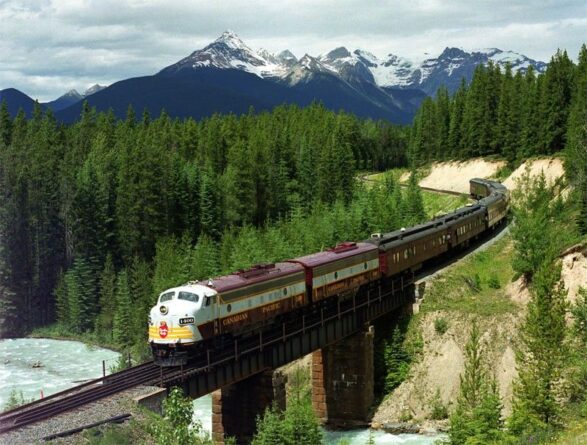
Approximately 160 years ago, much of Canada, the second largest country in the world, remained unexplored and uninhabited wasteland. Historian Pierre Berton writes that in those days, «three-quarters of the population lived on farms that were far apart» and «traveling long distances was incredibly difficult» because of the terrible roads. And it was not always possible to travel along rivers and lakes, because for about 5 months a year they were bound by ice.
Prime Minister John MacDonald, aware of these difficulties, proposed in 1871 to build a railroad connecting the Atlantic coast with the Pacific. The construction of a similar railroad in the United States ended in 1869. However, unlike the United States, the Canadian government had less money, the distances were much greater, and the population was ten times smaller. One Canadian politician called the project «the most ridiculous in history.» Another politician ironically stated that the Prime Minister would soon propose a railway to the Moon. jpg» />Expensive project
Despite such difficulties, the government promised that it would build this railway in ten years. Sandford Fleming, a Scottish railroad engineer, estimated that the project would cost, at the time, an unbelievably expensive amount of about 100 million Canadian dollars. True, the road could be slightly shortened and simplified by letting it through the United States. However, MacDonald considered such a decision dangerous, especially in case of war, and insisted that the railway pass only through Canada.
Many investors did not want to invest in such an expensive and risky business. In 1875, construction began on the main line of the Canadian Pacific Railway (CPR). But after ten years, a situation arose that could have stopped the project. The fact is that on July 10 at 15:00, the construction company was supposed to pay off a debt of $ 400,000, but it did not have that kind of money. However, at 14:00 that day, the Canadian Parliament finally agreed to provide a larger loan, and work continued.
Construction difficulties
When workers were laying a railroad in northern Ontario, they discovered that there was rocky rock at a depth of 30 centimeters. Therefore, it was necessary to bring soil for the embankment from afar. In Central Canada, serious problems arose during the winter, when temperatures dropped to minus 47 degrees Celsius, and the average annual snowfall was several hundred centimeters. The most dangerous was the western section of the railroad, which ran through the Rocky Mountains. It was said that death comes here without warning. The project was complicated by the fact that many tunnels and bridges had to be built. So the workers worked ten hours a day, despite the rain, swamp and snow.
After all, on November 7, 1885, in Eagle Gorge, in western British Columbia, the last railroad crutch was driven without much celebration. The station was named Craigellaki, after the Scottish village that was a symbol of intransigence in turbulent times. The General Director of KTZD, speaking at a modest ceremony, said: «I can only say that all the work was done in good faith.»
The impact of the railway on people's lives
Thousands of Chinese workers invited to build the railway were promised permanent jobs. This work was often very dangerous, especially in the Rocky Mountains. Unfortunately, after the construction was completed, many guest workers had to work for several more years to raise money for the journey home.
With the advent of the railway, more and more industrial and commercial companies sprang up in the west, which negatively affected the lives of the indigenous people. New cities and villages appeared here, and the original inhabitants of these lands were forced to move to reservations. Also had to close various arrivals and taverns along the former trade routes. But the railroad also brought positive changes. She, as they say, «liberated people from dirt and slush» and freed «from the ice shackles of winter.» In addition, products brought from the countries of the East to the Pacific coast, within a few days, got to the cities in the east of Canada.
The railway continues to play an important role in Canada in the transportation of various goods. However, fewer and fewer people travel by it, as most people prefer cars and planes. But many still love trains. Escaping from the hustle and bustle of the 21st century, they sit in a comfortable pasture and enjoy the scenic views from Toronto all the way to Vancouver to the sound of wheels. Then the train speeds up life. Today, passengers passing through all of Canada can relax and remember the interesting history of the «railway between two oceans».